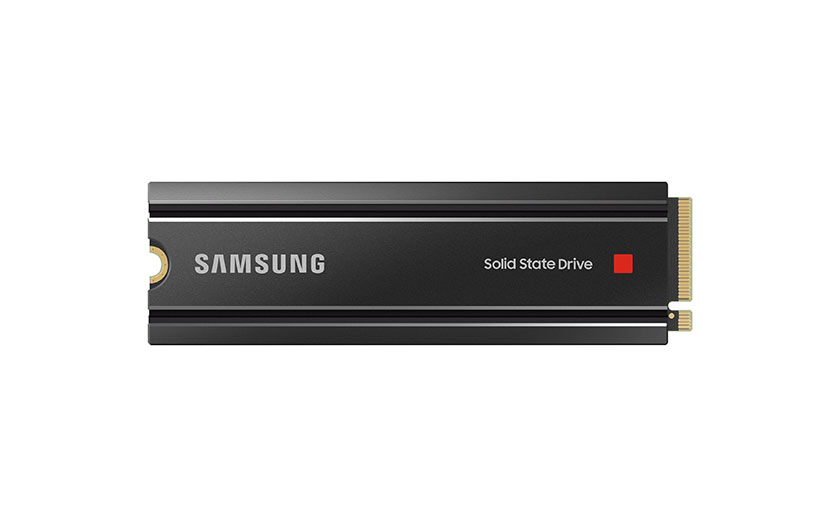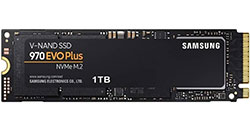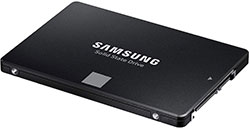The Samsung SSD 980 PRO and the Seagate FireCuda 530 SSD are the lock tip in the storage offerings of their respective manufacturers. The two drives almost completely exhaust the technical possibilities with their performance rates and compete for the favor of the same target group. Where are the differences between the Seagate FireCuda 530 SSD and the Samsung SSD 980 PRO in a detailed comparison?
- ADS -
Advantages Samsung SSD 980 PRO compared to Seagate FireCuda 530 SSD
- Tendentially lower prices for the same capacity
- Lower costs per storage unit
- 250 GB version for a cheaper entry
Advantages Seagate FireCuda 530 SSD compared to Samsung SSD 980 PRO
- Better read and write performance
- All capacities available with heat sink
- 4 TB version as hard disk replacement
- Higher TBW values within warranty period
find best buy SSD on Amazon.com #ad
shop worldwide on | Amazon.com #ad | computeruniverse.net | eBay.com | AliExpress.com |
Similarities in technology and features
Taking a look at the features, the Samsung SSD 980 PRO and the Seagate FireCuda 530 SSD are similar in many aspects. Both producers relied on the fourth-generation PCI Express interface to connect to the system, as well as the 3-bit TLC flash memory to hold the data. The warranty is a very customer-friendly 5 years, and the allowed amount of write data in this period is more than double for the FireCuda 530 SSD compared to the 980 PRO.

Comparison of storage size and capacity
In terms of available storage capacities, there is an overlap between the Seagate FireCuda 530 SSD and the Samsung SSD 980 PRO from 500 GB to 2 TB. Complementing this, Samsung’s drive is available in a 250 GB version for a cheaper entry point in absolute terms. Seagate’s SSD, on the other hand, is additionally offered in a 4 TB version for the particularly large storage requirements, for example, for a large number of video games or the extensive 4K video material.
Differences in performance and speed
The performance of both M.2 2280 NVMe SSDs is consistently on a very high level, although the Seagate SSD always has the upper hand compared to the Samsung drive. The FireCuda 530 SSD achieves up to 7,300 MB/s read and 6,900 MB/s write. The 980 PRO achieves a maximum of 7,000 MB/s and 5,100 MB/s, respectively. To counteract the performance drops under permanent load, both storage devices are optionally available with heatsinks for better temperature management.

Conclusion SSD comparison – Seagate FireCuda 530 SSD and Samsung SSD 980 PRO differences
The Samsung SSD 980 PRO and the Seagate FireCuda 530 SSD can convince on the full line in view of the technical specifications and the features. The Samsung drive can make up for the weaknesses in the maximum achievable performance rates with a tendency towards a lower price. Moreover, the entry into the world of SSDs with the PCIe 4.0 interface is comparatively cheap with the 980 PRO with a capacity of just 250 GB. The storage solution from Seagate, on the other hand, offers the very high speeds, the more generous TBW values and a version with a 4 TB storage size. Furthermore, the Samsung SSD 980 PRO and the Seagate FireCuda 530 SSD are compatible with the Playstation 5 according to the manufacturers because they meet all requirements.
find best buy SSD on Amazon.com #ad
shop worldwide on | Amazon.com #ad | computeruniverse.net | eBay.com | AliExpress.com |
Samsung SSD 980 PRO vs Seagate FireCuda 530 SSD – Technical data comparison differences
| product / model | Samsung SSD 980 PRO | Seagate FireCuda 530 SSD |
| form factor | M.2 2280 SSD | M.2 2280 SSD |
| interface | PCIe Gen 4.0 x4 | PCIe Gen 4.0 x4 |
| capacity | 250 GB 500 GB 1 TB 2 TB |
500 GB 1 TB 2 TB 4 TB |
| dimensions | SSD without heatsink 80.15 x 22.15 x 2.38 mm SSD with heatsink 80.15 x 24.15 x 8.6 mm |
SSD without heatsink 80.15 x 22.15 x 2.23 mm (500 GB, 1 TB) 80.15 x 22.15 x 3.58 mm (2 TB, 4 TB) SSD with heatsink 80.15 x 24.2 x 9.84 mm (500 GB, 1 TB) 80.15 x 24.2 x 10.39 mm (2 TB) 80.15 x 24.2 x 11.04 mm (4 TB) |
| NAND type | 3-Bit TLC | 3-Bit TLC |
| sequential read | 6,400 MB/s (250 GB) 6,900 MB/s (500 GB) 7,000 MB/s (1 TB, 2 TB) |
7,000 MB/s (500 GB) 7,300 MB/s (1 TB, 2 TB, 4 TB) |
| sequential write | 2,700 MB/s (250 GB) 5,000 MB/s (500 GB, 1 TB) 5,100 MB/s (2 TB) |
3,000 MB/s (500 GB) 6,000 MB/s (1 TB) 6,900 MB/s (2 TB, 4 TB) |
| random read | 500,000 IOPS (250 GB) 800,000 IOPS (500 GB) 1,000,000 IOPS (1 TB, 2 TB) |
400,000 IOPS (500 GB) 800,000 IOPS (1 TB) 1,000,000 IOPS (2 TB, 4 TB) |
| random write | 600,000 IOPS (250 GB) 1,000,000 IOPS (500 GB, 1 TB, 2 TB) |
700,000 IOPS (500 GB) 1,000,000 IOPS (1 TB, 2 TB, 4 TB) |
| reliability (MTTF) | 1.5 million hours | 1.8 million hours |
| TBW | 150 TB (250 GB) 300 TB (500 GB) 600 TB (1 TB) 1,200 TB (2 TB) |
640 TB (500 GB) 1,275 TB (1 TB) 2,550 TB (2 TB) 5,100 TB (4 TB) |
| warranty | 5 years limited | 5 years limited |
| model code / part number | SSD without heatsink MZ-V8P250BW (250 GB) MZ-V8P500BW (500 GB) MZ-V8P1T0BW (1 TB) MZ-V8P2T0BW (2 TB) SSD with heatsink MZ-V8P1T0CW (1 TB) MZ-V8P2T0CW (2 TB) |
SSD without heatsink ZP500GM30013 (500 GB) ZP1000GM30013 (1 TB) ZP2000GM30013 (2 TB) ZP4000GM30013 (4 TB) SSD with heatsink ZP500GM30023 (500 GB) ZP1000GM30023 (1 TB) ZP2000GM30023 (2 TB) ZP4000GM30023 (4 TB) |

